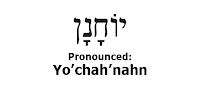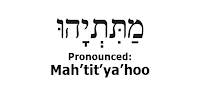The Mitzvah of Lighting Shabbat Candles
The Talmud explicitly states: “Lighting candles for Shabbat is obligatory” (Talmud Shabbat 5b). More than that, however, the Talmud frequently explains that lighting Shabbat candles is necessary to properly honor Shabbat and to create a pervading sense of oneg Shabbat, the enjoyment of Shabbat. More explicitly, the sage Rava explains that Shabbat candles are an important element of creating shalom bayit, peace in the home.
One is supposed to enjoy Shabbat, and stumbling about in a dark house is hardly the way to enjoy a special day. Today, when every house is filled with electric lighting, it may be difficult to appreciate the importance of candles. Remember, however, that electric lights came into use only at the beginning of the last century. Until then, the burning Shabbat candles, often placed on or near the dining room table, were what ensured shalom bayit, peace in the home. Even today, in rooms filled with electric lights, there is a special soothing feeling watching the flickering flames of the candles cast playful shadows as they add a glow of sanctity to the Shabbat setting.
Lighting the Shabbat candles is a positive commandment designed to enhance the enjoyment of Shabbat, and is therefore part of the overall mitzvah of zachor et ha’Shabbat, Remember the Sabbath. At the same time, kindling a fire is a m’la’cha (http://www.jewishtreats.org/2010/01/mlacha.html), one of the acts prohibited on Shabbat. It is for this reason that the candles are lit just before Shabbat begins (traditionally 18 minutes before sundown). This strange duality of a prohibited act welcoming the holy day is why the candles represent the very nature of the observance of Shabbat -- a day of beauty, celebration and ritual on which Jews alter their usual habits in order to maintain the day’s sanctity.
Twebrew School: Shabbat is brought to you on behalf of Shabbat Across America and Shabbat Across Canada, the only cross-continental celebration of Shabbat. The fourteenth annual SAA/C will take place on March 5, 2010. To learn more, click here.
Copyright © 2010 National Jewish Outreach Program. All rights reserved.
One is supposed to enjoy Shabbat, and stumbling about in a dark house is hardly the way to enjoy a special day. Today, when every house is filled with electric lighting, it may be difficult to appreciate the importance of candles. Remember, however, that electric lights came into use only at the beginning of the last century. Until then, the burning Shabbat candles, often placed on or near the dining room table, were what ensured shalom bayit, peace in the home. Even today, in rooms filled with electric lights, there is a special soothing feeling watching the flickering flames of the candles cast playful shadows as they add a glow of sanctity to the Shabbat setting.
Lighting the Shabbat candles is a positive commandment designed to enhance the enjoyment of Shabbat, and is therefore part of the overall mitzvah of zachor et ha’Shabbat, Remember the Sabbath. At the same time, kindling a fire is a m’la’cha (http://www.jewishtreats.org/2010/01/mlacha.html), one of the acts prohibited on Shabbat. It is for this reason that the candles are lit just before Shabbat begins (traditionally 18 minutes before sundown). This strange duality of a prohibited act welcoming the holy day is why the candles represent the very nature of the observance of Shabbat -- a day of beauty, celebration and ritual on which Jews alter their usual habits in order to maintain the day’s sanctity.
Twebrew School: Shabbat is brought to you on behalf of Shabbat Across America and Shabbat Across Canada, the only cross-
Copyright © 2010 National Jewish Outreach Program. All rights reserved.


Comments
Post a Comment